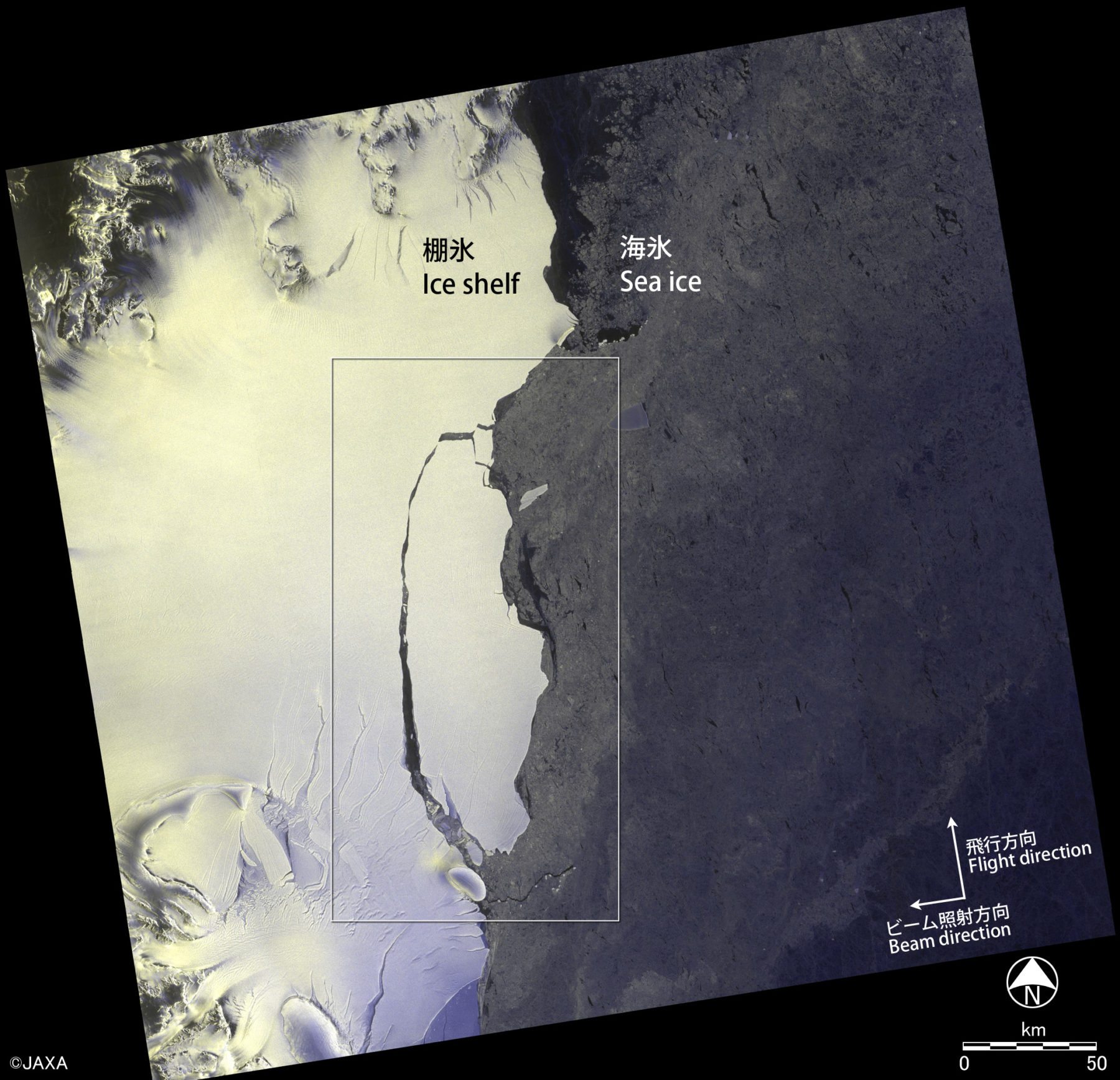ALOS-2/PALSAR-2 Observation results on detachment of a large iceberg from Larsen-C Ice Shelf in Antarctic Peninsula.
Posted: Jul 25, 2017, 10:30 (UTC)
Larsen is one of the huge ice shelves in Antarctica. Larsen-A and -B experienced the destructions in 1995 and 2002, respectively. Larsen Ice Shelf affects the ice loss in west Antarctica and its contribution to global sea level rise. Therefore, many glaciologists have paid much attention to their dynamics. On 12th July, 2017, a large iceberg separated from Larsen-C Ice Shelf, which is the expected weight of approx. one trillion ton, and the surface area is about 5,800 km2. Due to its size, ALOS-2 ScanSAR mode (Observation width: 350 km) is suitable for capturing the entire portion of the iceberg (Fig. 1).
 Fig.1: Observation area by ALOS-2.
Fig.1: Observation area by ALOS-2.Fig.2: Color composite images acquired on 21th July 2017 (left) and 19th Aug 2016 (right). The rectangles show the areas in Fig. 3. (Click to view enlarged image)
Figure 2 shows the color-composite images (red: HV, green: HV and blue: HH polarization) observed by ScanSAR mode. Sea ice is seen in the right side on the image and the ice shelf is seen in the left side. The rectangular at the center of the image shows the area where the iceberg separated from the ice shelf. We can see a trace of crack on the ice shelf over 100 km from south to the red arrow in 2016 (right panel in Fig. 2). However, the crack is seen entirely on the ice shelf in 2017, which means the iceberg has been completely separated from the ice shelf (left panel in Fig. 2).
Fig.3: Enlarged images of the iceberg. (Click to view enlarged image)
Figure 3 shows the enlarged images of the iceberg. We can clearly confirm the crack on the ice shelf. This figure reveals that the size of the iceberg is about 50 km of the width and 150 km of the length. This huge iceberg detachment has a potential to accelerate ice speed on the inland ice shelf, which may enhance more iceberg detachment. We are going to continue the observation by ALOS-2.


Comments are closed.